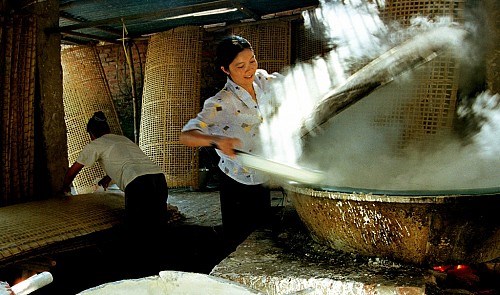
Women spread cassava starch into sheets, a skill which takes great dexterity and brisk movements. Photo: Lai Dien Dam
Apart
from its century-old houses, Cu Da Village, a secluded area in Cu Khe Commune
in Hanoi’s Thanh Oai District, 15 kilometers southwest of the downtown area, is
also known for its cassava vermicelli production.
Cassava
vermicelli is a staple of many Vietnamese diets, used in a variety of
Vietnamese dishes and often served for breakfast alongside duck meat and
asparagus.
Beginning
in October, when demand for the traditional Vietnamese noodle surges, the
village teems with commotion as people and trucks hurry back and forth to
produce and transport the vermicelli.
The
time-honored craft remains almost unchanged by time.
The
main ingredient, cassava starch, is boiled and rolled into thin slices before
being dried outdoors.
The
pervasive, rusty smell emitted from the cassava starch immediately separates
vermicelli making households from others in the village and bamboo wattles of
vermicelli are a common sight throughout the neighborhood.
By
the end of the day, the wattles are taken home and sheets of vermicelli are cut
into fine strings before the drying process continues the following day.
With
a manual approach to producing the noodle having prevailed over the decades,
vermicelli products are packed in proper proportions and transported around the
country for consumption.
Below
are a series of photos by Lai Dien Dam featuring the craft village.
These
photos were one of the entries to Tuoi Tre (Youth) newspaper's year-long
competition themed “Vietnam – Country – People" concluding in October last
year.
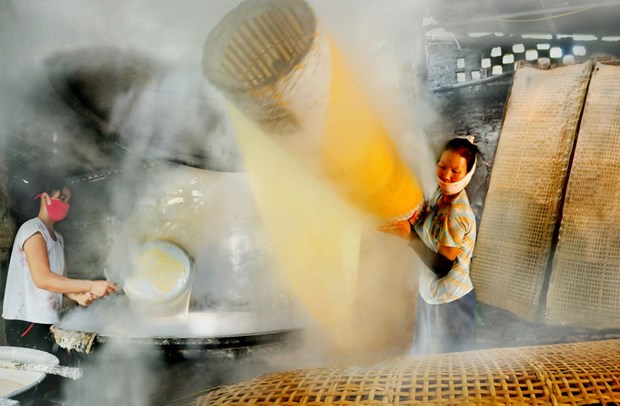
Cassava vermicelli is made from cassava starch.
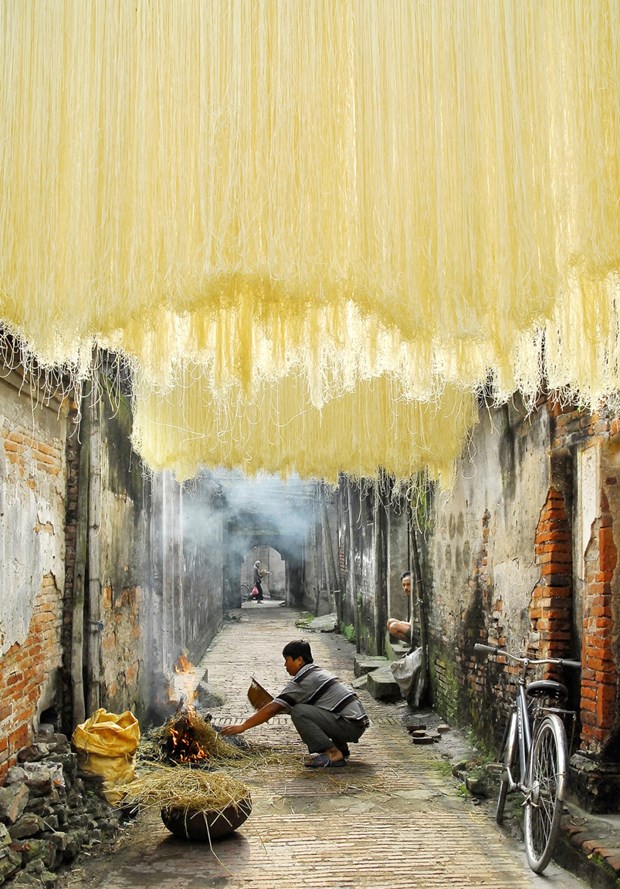
Cassava vermicelli is dried everywhere in Cu Da Village.
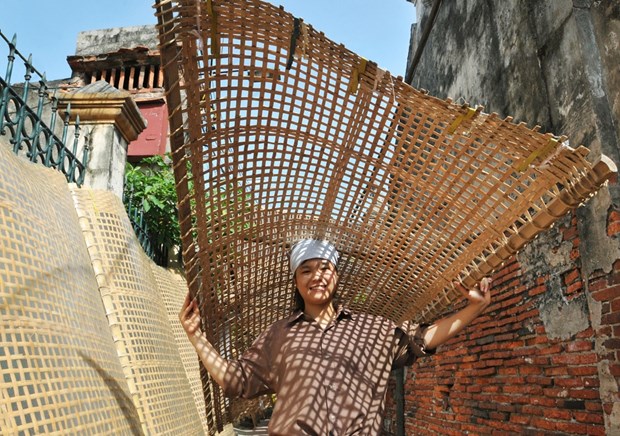
Cassava vermicelli is dried on bamboo wattles.
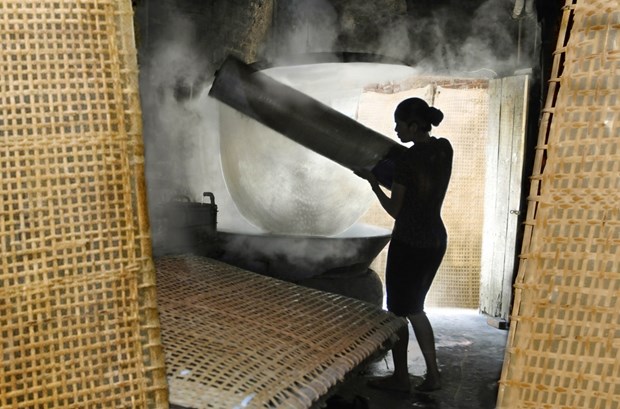
Most households in Cu Da Village have a kitchen used for spreading cassava starch into sheets.
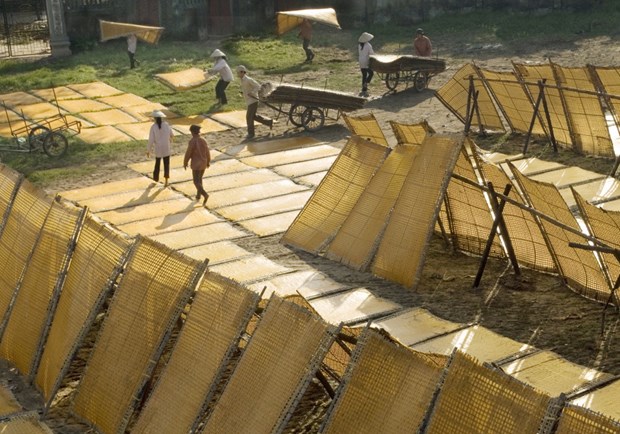
Wattles are placed on an empty plot near the Nhue River.
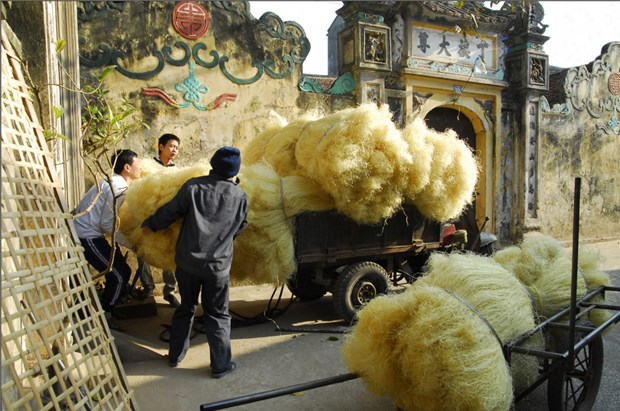
Traders purchase finished vermicelli in bulk in the village.
By Tuoitrenews